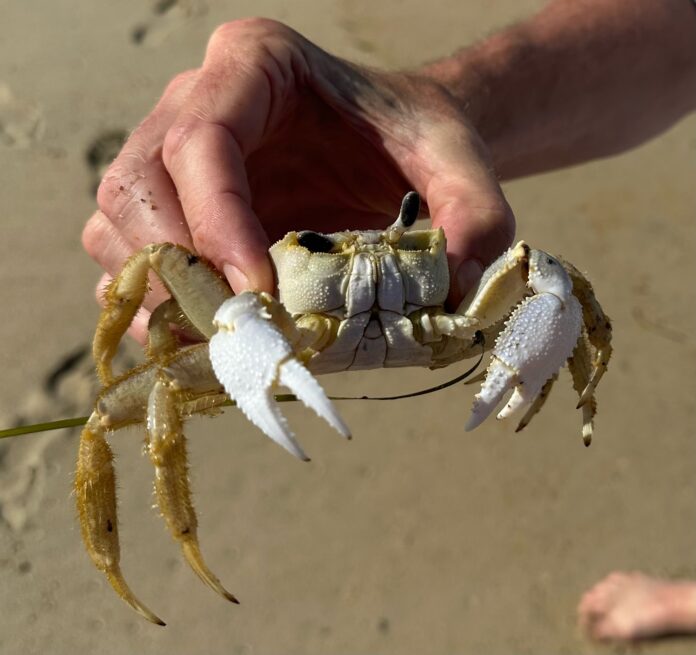BY HARRY WEEKES
Visiting a new ecosystem is always a treat for me. In July, I got to go to the Outer Banks of North Carolina. Specifically, I went to Duck (like that didn’t work out perfectly).
Duck sits on a thin band of land between the North Atlantic and Currituck Sound. Because I come from a golfing family and distances are invariably referenced to the sport, I am pretty confident I could drive a golf ball across the part of land we were on. In other words, it was about 300 yards wide.
Starting at the marsh grass of the sound, the land is low and gently slopes up to a steep sea dune that runs the length of the beach—a grass-and-shrub-covered sand wall that presides over the ocean.
This dune gives way to miles of fine sand, where the North Atlantic relentlessly shapes and sculpts our eastern shore. When I asked, “What’s out there?” and nodded to the open ocean, Connor, my host, replied, “Morocco.”
To know what I felt like walking down that beach one simply had to watch (or envision watching) our mini-Dachshund, Olive. We wondered how she would take to the sand and the sea, especially as a dog bred to dig up badgers. Well, it turns out, other creatures make burrows and shuffle about, too. And in Duck, the Atlantic ghost crab takes the cake.
In a strip of sand that sits at the high-tide mark, ranges the length of the beach, and is about five yards wide, ghost crabs of varying sizes dig burrows from which they forage on seaweed, jellyfish, and other food provided by the sea.
Olive went from Dachshund to Krabbehund, scurrying after these little ghosts or otherwise looking alertly for them. Olive’s bounding and darting and curious stares into a pock-marked beach mirrored my mood and my actions.
Pursuing these crabs was to open the door to a thousand questions. How fast can they run? Why do they run sideways? How do they see so well? Can they see everywhere? How far do I have to dig to find one in its burrow?
Among the things the Internet taught me is that ghost crabs can run upwards of 10 miles an hour, their burrows can go down four feet, and their eyestalks give them 360-degree vision. What chasing them taught me is that they have unbelievable navigational and spatial awareness software. That being able to run directly from the land into the ocean and improve your mobility is like a superpower. That clinging to the sand in a crashing wave keeps you in one spot, and when that doesn’t work a “tuck and tumble approach” does just fine. That those crazy eyestalks fit very nicely into protective sheaths on the top of the carapace. And that capturing a crab in the waves was the only successful technique.
And so it was that I apprehended Endo, nicknamed for his somersaulting behavior in the surf.
I have no idea what Endo made of me—a giant, struggling beast with two legs and ten fingers. The questions that came to mind this time were from a different point of view—Endo’s. Did he know that I was doing my best to handle him as gently as I could? What did he think of being hoisted into the air and returned almost as rapidly to the sand? Did my quiet and delighted chuckles have any impact on him?
All of these questions, of course, beg a much broader one: Do ghost crabs even ask questions? Needless to say, that one is a bit harder to answer.
Harry Weekes is the founder and head of school at The Sage School in Hailey. This is his 52nd year in the Wood River Valley, where he lives with Hilary and one of their three baby adults, Simon. The other members of the flock are Georgia and Penelope (Georgia recently fledged from Davidson College in North Carolina and Penelope is at Middlebury College in Vermont).



